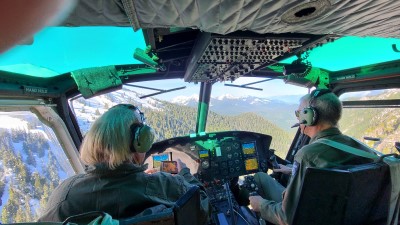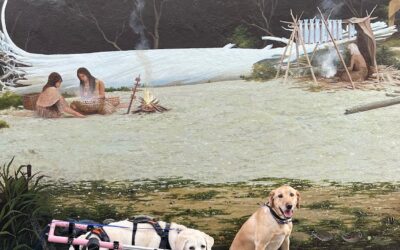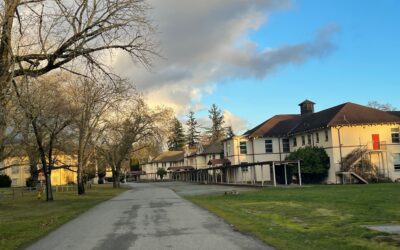Last month, I supported a search for a solo hiker missing for six days above the snowline in Skagit County, Washington. As the mountain rescue teams started working their way up into their assigned areas, I loaded into the Spokane Sheriff’s helicopter, along with the incident commander and the mountain rescue leader.
This was to be a scouting tour. While we had all carefully studied our topographic maps, we knew that when planning a search, there is just no substitute for “on the ground” or “in the air” knowledge of the landscape experienced by the lost person.
We lifted off from the small helipad at the North Cascades National Park ranger station, cleared powerlines that were a bit too close for comfort, and then gradually ascended up the Cascade River Basin toward our search area 12 miles to the east. Upon arrival, the pilots circled slowly to gain an altitude of 6000 feet, then performed a slow orbit of the entire mountainside to provide us with a first-hand understanding of the terrain involved.
And what I saw shocked me:
Everywhere there were high-angle snow slopes, punctuated by steep drainages and dense evergreen slopes. This was no “hiking trail.” At this time of year, this was a snow-covered mountaineering route.
At the end of the day, mountain rescue teams returned safely (with one minor ankle injury and one bruised hand). K9 teams returned safely (with tired dogs). Weary command staff packed up the Incident Command Post and drove home after a 14-hour day. We completed all planned search assignments, but we did not find any trace of our missing hiker.
But the next day, I kept thinking about what I’d seen from the helicopter. And then I started remembering posts I’d been reading in the Washington Hikers and Climbers Facebook Group.
And I realized something was happening.
People planning hikes were seeing a guidebook description, or a route on AllTrails app, and then were getting locked into the mindset that “this is just a hike – I don’t need to consider specialized preparation, gear, or training.”
And when in that mindset, they don’t anticipate that snow cover can move the threshold of “what’s required for safe travel” from Hiking to Mountaineering.
And if you asked them “Do you have the gear and training for this climb?” – I bet they’d answer “Climb? What climb? I’m just going on a hike.”
Imagine three inter-related vertical scales as shown in the table below. The lower portion of each scale represents conditions safe for a “hike.” The upper portion of each scale represents conditions that mean your planned hike is actually a mountaineering route that requires special gear, preparation, and training in order to be safe.
| Terrain Rating / Conditions | Gear Required for Safe Travel | Training Required for Safe Travel |
| Class 5: Technical climbing Class 4: Roped climbing Class 3: Exposed scrambling Snow-covered terrain Class 2: Easy scrambling Class 1: Rough hiking trail Class 1: Smooth hiking trail | Avalanche beacon Avalanche rescue gear Ice axe + rope gear Personal locator beacon Mountain boots + crampons Microspikes Hiking boots (ankle support) Lightweight shoes | Crevasse rescue Ice axe self-arrest Roped climbing techniques Fitness training Scrambling course Snow travel techniques Wilderness navigation Basic map and compass |
What many hikers fail to realize is that the threshold between “hiking” and “mountaineering” in each column of this table moves up and down, depending upon local conditions. In particular, lingering early-season snow can easily put hikers outside of the normal hiking safety levels.
This year especially, the surge of people interested in hiking, coupled with persisting high snow levels is already causing an increase in SAR missions. The pent-up demand to get out is perfectly understandable.
But we’re seeing that lack of experience and lack of understanding of potential hazards is getting people in to trouble.
Last Saturday, while at the Skagit County search base, the North Cascades National Park SAR Coordinator came to our command post asking if we might be able to helo-insert a team on Sourdough Mountain, some 16 miles to the north.
Two trail-runners (lightly equipped, and wearing microspikes) had jogged up to the lookout at 5500 feet, and then decided it was unsafe to descend the steep snow.
This was a bad decision (“this is a trail, and I’m a trail-runner, so let’s go for it”) followed by a good decision (“the descent looks a lot harder than when we came up.”)
But fundamentally, this situation illustrated the mistaken attitude that hikes are just hikes, regardless of conditions such as snow cover. It’s an attitude the prevents people from understanding when hikes become climbs.




0 Comments